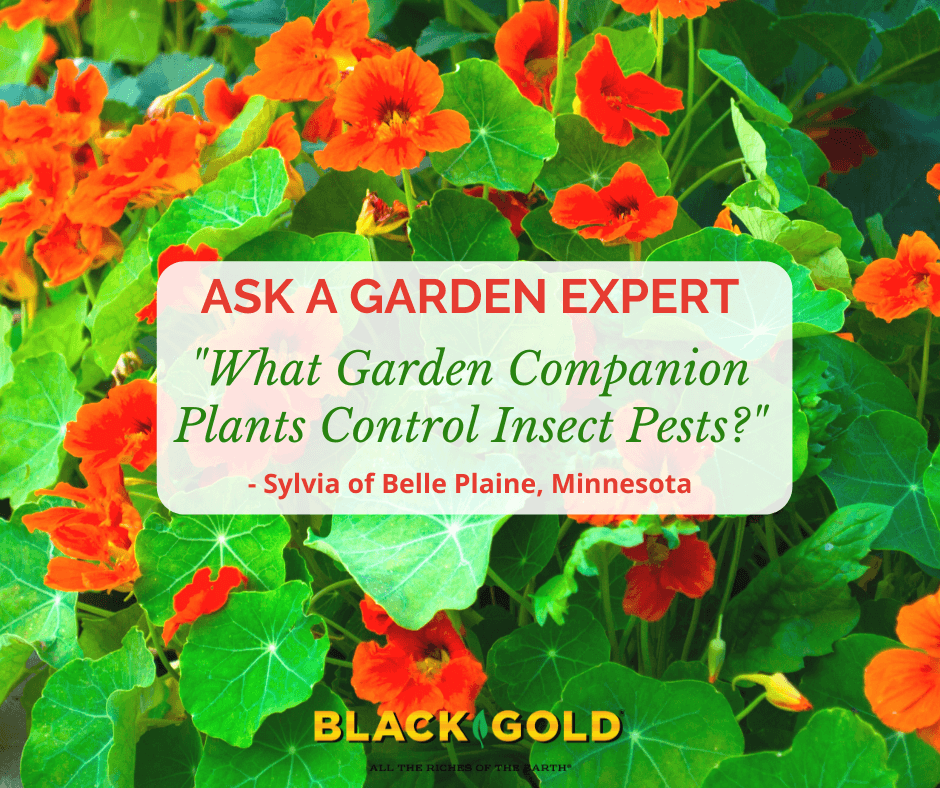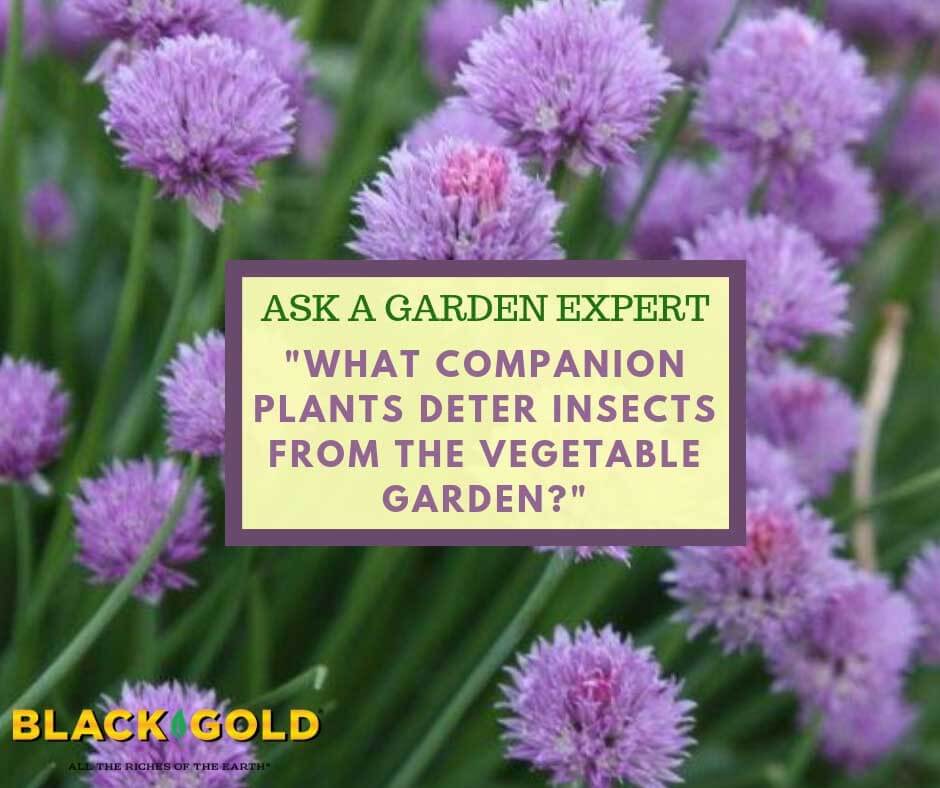“What’s the best flower to control unwanted bugs in your veggie garden?” Question from Sylvia of Belle Plaine, Minnesota
Answer: Some commonly recommended companion plantings are ineffective, while others are supported by research. Most of the research surrounds vegetable crops and companion plants that reduce the number of insect pests that attack these crops. Companions fall under two categories:
- Trap crops: These plantings attract insect pests, luring them away from favorite vegetables. They take up a lot of space and are not practical for most home gardeners, so I will just cover repellent companion plants that have been shown to really help ward off vegetable pests.
- Insect-repelling companion plants: These plants ward off certain insect pests in the garden.
INSECT-REPELLING COMPANION PLANTS
These plants emit chemicals that deter insects. Repelling plants will never totally protect vegetables from the pests that attack them, but they can reduce pest numbers. Here are a few good examples of vegetable pests and the companion plants that repel them.
Herbal Insect Repelling Companion Plants
Herbs have been shown to offer repellent protection to specific veggies. Here are the best.
- Basil (Ocimum basilicum) can reduce the number of tomato hornworms on tomatoes and thrips on flowers. Choose large varieties.
- Chives (Allium schoenoprasum) and onion relatives repel plant-damaging moths, aphids, and mites that attack a wide host of vegetable plants, such as brassicas (collards, cabbage, broccoli, and cauliflower), beans, and squash, so a border of chives might be really helpful in the garden.
- Sage (Salvia officinalis), rosemary (Rosmarinus officinalis), hyssop (Hyssop officinalis), thyme (Thymus vulgaris), dill (Anethum graveolens), and chamomile (Chamaemelum nobile) are more edible herbs that may also provide brassicas some protection against common pests.
- Catnip (Nepeta cataria), wormwood (Artemisia absinthium), southernwood (Artemisia abrotanum), and tansy (Tanacetum vulgare) are inedible herbs that reduce damage by flea beetles, a pest that attacks eggplant, brassicas, tomatoes, and other common crops. One downside is to these repellent plants is that they tend to spread and become weedy. Of these, I recommend catnip the most. Just clip it back occasionally to keep it from flowering and setting seed.
 Flowering Insect Repelling Companion Plants
Flowering Insect Repelling Companion Plants
A few common garden flowers also have repelling qualities.
- Nasturtiums (Tropaeolum majus) may also help brassica crops
- Marigolds (Tagetes spp.) help tomatoes by repelling the tomato root-knot nematode, a debilitating underground pest. (Click here to learn more about how marigolds help tomatoes.)
All of the companion herbs and flowers mentioned will flourish in soil amended with fertilizer-enriched Black Gold Garden Soil. I hope that some of these tips. When planting to protect, it is most helpful to plant a close row or ring of repelling plants near the vegetables that you want to protect.
Happy gardening!
Jessie Keith
Black Gold Horticulturist



